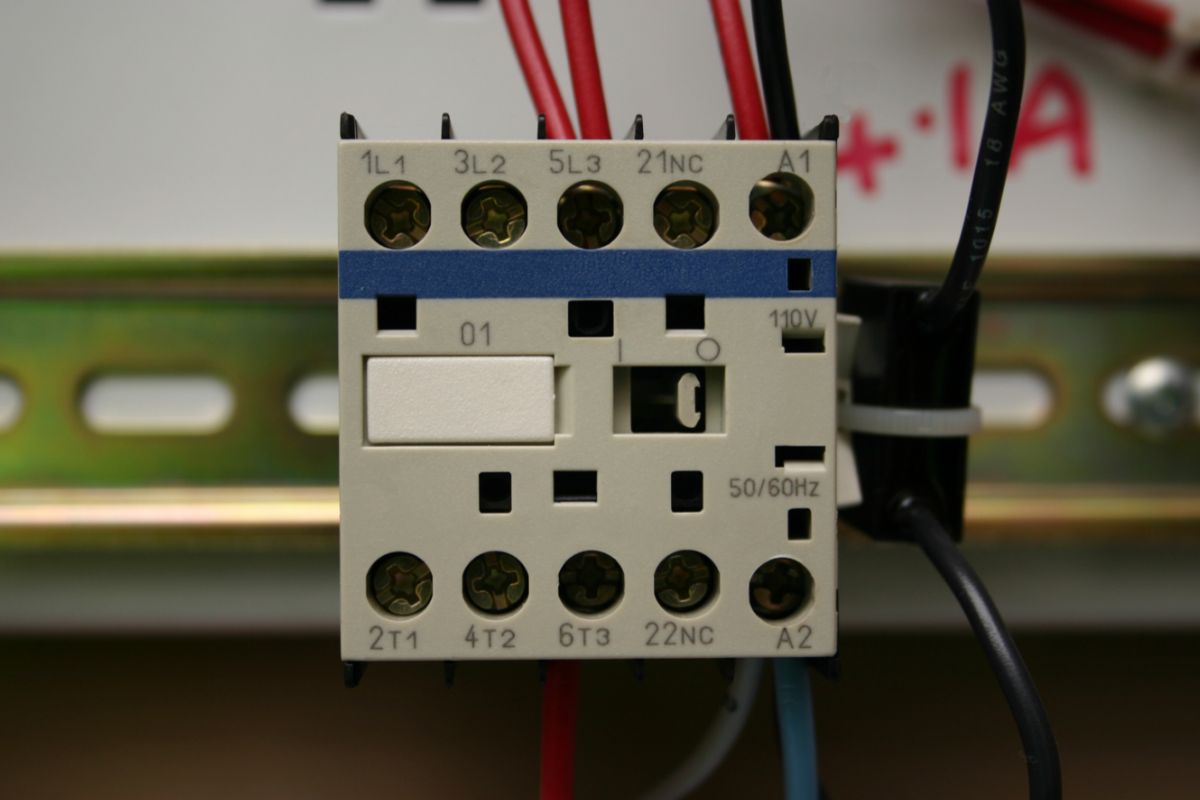One of the main things that prevents an AC from running is a contactor that’s not pulling in. But what causes this?

That’s what we’ll be discussing in our article today. We’ll also take a look at the steps to take if your contactor only works manually.
If your AC contactor isn’t pulling in, you must first check the voltage at the contactor coil. If the contactor coil isn’t getting 24VAC, then it will not pull in.
Loose wiring connections and burned out contactor coils may also be reasons why your contactor coil isn’t pulling in.
Why Is My AC Contactor Not Pulling In?
No Voltage To The Contactor Coil
The contactor will not pull in if your contactor isn’t receiving 24VAC from your thermostat. Your control board is the main source of voltage for your contactor.
In many AC systems in the home, the voltage has the following route to the contactor:
R terminal on the air handler or furnace control board > R and Rc terminal on the thermostat > Y terminal on the thermostat > Y terminal on the control board > AC contactor coil.
If there are any broken connections, then your contactor won’t pull in.
Meanwhile, some AC systems also have a float switch wired in.
The float switch is often wired between the R terminal on the air handler and the R terminal on the thermostat.
The float switch may also be wired between the Y terminal on the thermostat and the Y terminal on the control board.
Triggered Condensate Switch
A clogged AC condensate drain pan or pipe will trigger your condensate overflow switch and your contactor will not pull in.
The condensate overflow switch is often wired next to the wire that runs into your AC contactor.
If something triggers the overflow switch then it will cut the power to your AC contactor.
If your AC’s condensate pipe or pan has water in it, then you will need to find the source of the clog and clear it.
Loose Wiring Connections
If there are loose connections to your AC contactor, then it won’t pull in. The contactor coil connections need to be tight for the contactor to pull in.
If these connections are loose then the coil won’t energize and the contactor won’t pull in. ‘Chattering’ is also a consequence of loose connections.
Chattering is when the contactor engages and disengages at a rapid pace. You should look for any loose connections on the terminals if your contactor is making a chattering noise.

Burned Out Contactor Coil
If there is voltage in your contactor coil but is not pulling in, then the coil has burned out. The coil is part of the contactor that pulls in the contacts.
An energized coil creates a magnetic field that draws in the moving core of the contactor.
When the contactor coil is burned out or damaged, then the contactor will not pull in. But how can you tell if you have a burned out contactor coil?
One way to check your contactor’s coil is by performing an ohm test:
Switch off the power to your furnace or handler, as well as your AC condensing unit.
Open the electrical enclosure of your AC condensing unit. The contactor coil’s terminals are often found on the left and right side of the contactor.
Before you remove the wires, photograph the contactor so you’ll know where the wires go later.
Switch your multimeter to the ohms setting and measure the resistance across the contactor coil. Your coil should measure about 10–20 ohms of resistance.
A burned out coil will measure a low amount of resistance, usually below 5 ohms.
Pitted Or Corroded Contacts
If your contacts are pitted or corroded, then the contactor can’t make a strong electrical connection when it pulls in. Your AC will also be unable to turn on.
Electrical arcs happen when the contactor engages and disengages. These are responsible for pitted contacts. The electrical arc creates pitting corrosion on the contacts.
This increases the resistance of the electrical connection.
Soon, electricity will not be able to flow through the pitted contacts, and your AC won’t switch on.
We recommend replacing the whole contactor if it has pitted or corroded contacts. Luckily, a contactor is simple and cheap to replace.
Some people recommend using contact cleaner to clean out the contacts. But we would avoid this.
Because the space between contacts is so tight they are very difficult to clean.
A lot of modern contactors have concealed contacts, so to get to them, you might have to take the whole thing apart.
Conclusion
If your contactor only works when it’s pushed in then there are two main reasons for this. It’s either not receiving voltage from your thermostat, or the float switch has been triggered.
Your thermostat turns your AC on by sending voltage to the contactor. Your thermostat may be the problem if you don’t hear it clicking in cooling mode.
Or, condensate overflow might be the problem. A triggered condensate overflow switch will prevent your thermostat from cooling.
Plus, your AC contact will only work manually.
Your contactor may only work manually because the high pressure or low pressure switch in your AC unit keeps tripping.
The low and high pressure switches protect your AC’s compressor from external refrigerant pressures.
If something is interfering with the refrigerant pressure in your AC unit, the high or low pressure switch will trip and stop voltage from reaching the contactor.
You should replace the air filter and clean the condenser soil if you believe your AC is experiencing refrigerant pressure issues.
If you still experience problems, then you will need to call in a professional to fix the issue.
